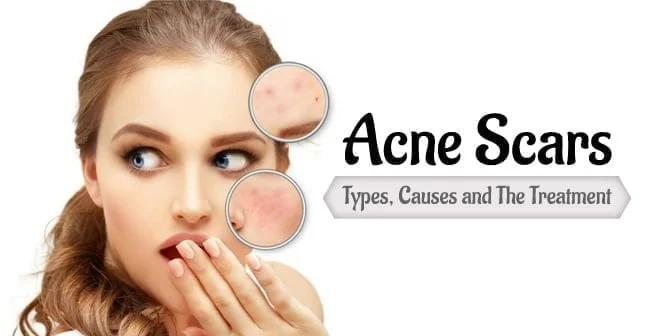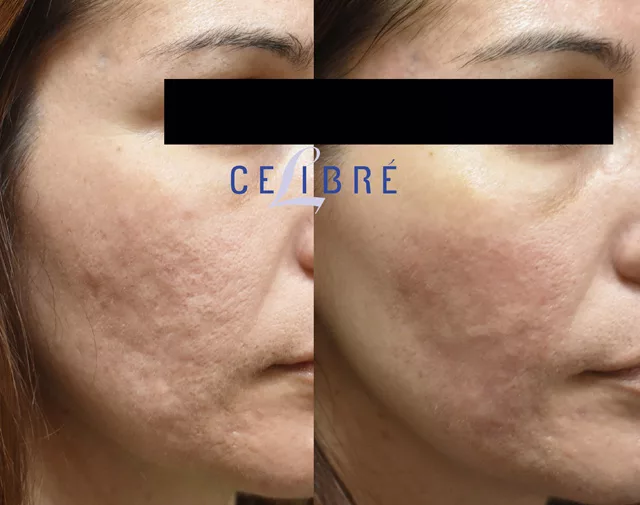Acne Scars - The Facts
Acne Scars - The Facts
Blog Article
Examine This Report on Acne Scars
Table of Contents10 Easy Facts About Acne Scars ExplainedThe Definitive Guide to Acne ScarsMore About Acne ScarsAll About Acne ScarsAll about Acne Scars
Increased acne scars occur when the body produces way too much collagen and create a visible bump. As we age, acne marks come to be a lot more visibly due to the fact that our skin sheds collagen. Some individuals are more probable to see scars than others. According to Dr. Garvey, the danger increases when: An individual has inflammatory acne such as acne cysts.A person delays therapy for inflammatory acne. The longer you wait to seek treatment for acne, the greater the danger of scarring. A person selects at, squeezes or pops acne. When standing out an acne, you push germs deeper right into pore. If we didn't require another reason that not to stand out a pimple, know that a scar could be the direct result of your activities.
Your hereditary makeup plays a huge duty in how much acne, and what type of acne you may develop. As we stated previously, there is no magic ingredient to take acne scars away in the blink of an eye. There are treatments available that aid reduce the scarring over time.
, a dermatologist may lift the mark, bringing it closer to the surface area of the skin to make it less obvious. Resurfacing eliminates layers of the skin, which allows the body to generate new skin cells.
The 3-Minute Rule for Acne Scars
best for all sorts of acne marks. Lasers and other light therapies can deal with raised scars safely and successfully. Treatment with a pulsed color laser (PDL) can assist minimize the impulse and discomfort, diminish shade, and squash an elevated scar. For people with lighter skin, extreme pulsed light (IPL) likewise may be a treatment option.
After 3 needling treatments, there was renovation in the look of acne marks over time contrasted with the control group, with very little pain reported - acne scars. Therapy of acne scarring remains a therapeutic challenge, with treatment methods that include a range of feasible options.
Nonablative and ablative lasers can be made use of to either get rid of or pierce skin in a fine identify pattern, with resulting neocollagenesis; just a portion of the skin is treated with each treatment, and a collection of treatments are needed to deal with the whole damaged surface. It has actually been suggested that neocollagenesis and enhancement of acne marks can additionally be achieved making use of needle rollers, which use a mechanical, macroscopic method to cause tiny skin and dermal perforations.
The 10-Second Trick For Acne Scars
Like repaint rollers, such tools can be returned and forth along the skin. Needling as a feasible therapy for acne scarring was introduced by Camirand and Doucet, that defined use a tattoo gun to abrade acne scars. Fernandes,6 subsequently insisted that needling with a roller led to percutaneous collagen induction.
At each of these visits, needling was done on the research study treatment area, and topical anesthetic was only rubbed into the control area. Digital photos and damaging events (eg, infection, long term erythema, long term edema, serosanguineous drain, blood loss, ulcer, erosion, and pigmentation), read more including their duration, resolution, intensity, partnership to the research procedure, and any alleviative actions taken, were recorded prior to each therapy.

Discomfort degree was recorded based upon a 10-point aesthetic analog range after the treatment. Quickly after each therapy, mild hand-operated stress with gauze was requested 5 mins to regulate determine blood loss and product secretion. The skin was saturated with saline swabs for an hour to promote hydration while the people were enlightened relating to the requirement for home treatment.
Acne Scars - An Overview
The device click this site was then more cleaned up by gas sterilization, stored in a closed plan, and identified with the participant's name and the initial therapy date on the box till the next treatment. This sanitation process was followed to ensure a high degree of infection control in this research study setting. The key result measure was the measurable worldwide scarring grading system, developed by Goodman and Baron.
2 blinded skin specialists (S.H. and M.P.) separately ranked participants' acne marks based on standard electronic photographs gotten at read the full info here baseline and at the 3-month and 6-month follow-up visits. Compelled agreement was made use of to fix up rankings. Considered that this was an early pilot trial, we considered it appropriate to think about acne scars collectively, not separately, by different morphologic subtypes (eg, rolling, boxcar, ice choice, and so forth).
and M.P.) did not take part in randomization or treatment and therefore were able to be blinded regarding project. Adjustments in mean scar ratings from baseline to 3 and 6 months, respectively, were calculated for the treatment and control arms. Repeated-measures evaluation of difference with pairwise comparisons with Sidak modification were performed to check whether the scar score varied on treatment kind, time, or the communication between the 2.
The Wilcoxon signed rank test was made use of to assess whether the difference in total acne scar appearance was connected with therapy type. The research took location from November 30, 2009, with July 27, 2010. Twenty people consented, and 5 quit before the very first treatment. The remaining 15 finished all treatments and are evaluated.
The Buzz on Acne Scars
At 3 months compared with standard, the decrease in scar score in the needling team was nonsignificant (mean difference, 2.4, 95% CI, 0.01 to 4.8; P =.052) (Number 3). The needling treatment was not particularly excruciating. The mean pain score was 1.08 of 10. Discomfort ratings increased a little over time (P =.01), with week 4 discomfort ratings (mean, 1.75; 95% CI, 0.90-2.60) significantly greater than week 2 (mean, 0.78; 95% CI, 0.40-1.20) and week 0 (mean, 0.71; 95% CI, 0.40-1.00).
When asked to estimate the pain experienced during and in the days after their procedure, participants commonly reported no pain (acne scars). The majority of participants were really completely satisfied with their procedure, responded yes when asked if they would certainly do this treatment once again to treat additional marks, and said they would certainly recommend needling to their close friends
Mild transient erythema and edema, which were not identified as adverse events and therefore not officially tracked, were routinely observed by the detective (M.A.) and reported by participants after treatments. This research study discloses some improvement in acne scars after a series of 3 therapies of needling. There is a statistically significant improvement in such scars in the therapy team from baseline to 6 months and no substantial enhancement throughout this duration in the control team.

Report this page